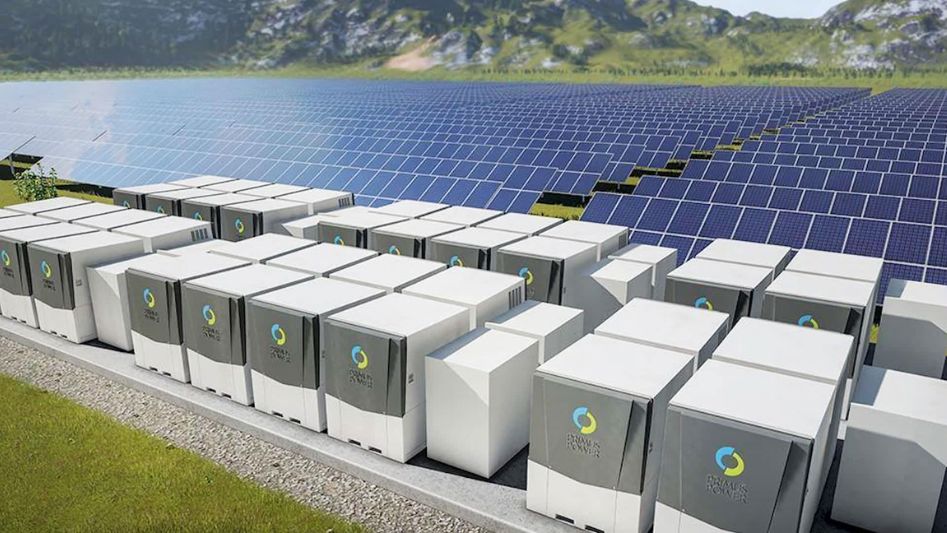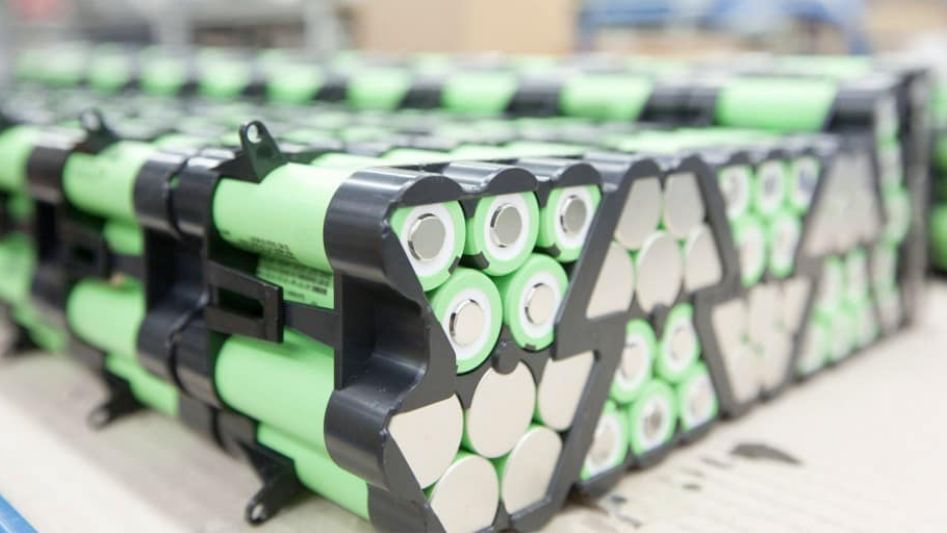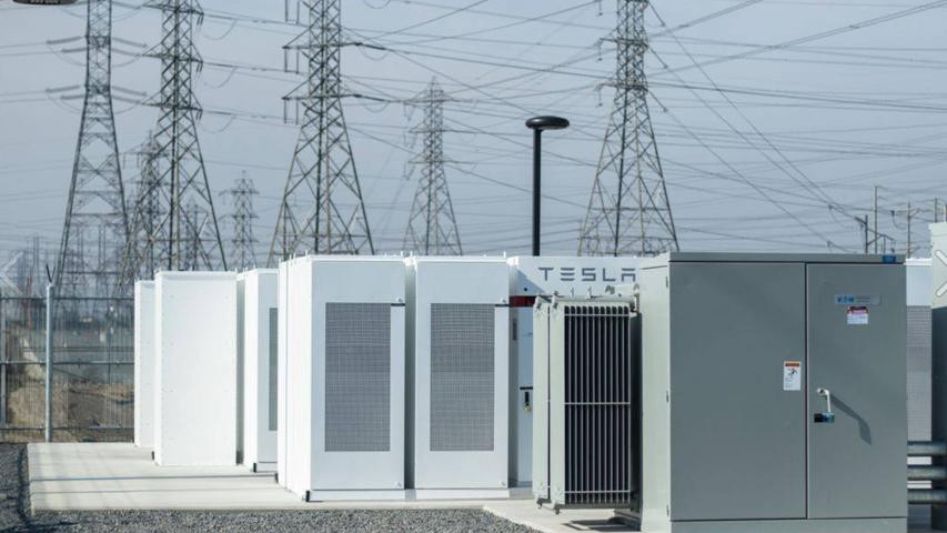The world needs more power, preferably in a form that’s clean and renewable. Our energy-storage strategies are currently shaped by lithium-ion batteries.
Table Of Content
- Content
- A Battery Built Into A Mountain
- Don’t you have a mountain? Build one
- Giant thermoses can repurpose old fossil fuel technology
- Rust can be our friend
- Conclusion
- FAQ
- You May Also Like
- External Links
Since the environment has changed, blackouts have become more common. Millions of Texans were without power for days during a record-breaking winter storm in 2021, and hundreds were killed. Last summer, Californians narrowly averted a total meltdown of the state’s electricity infrastructure due to an extraordinary heat wave.
Storms may produce blackouts by bringing down electrical infrastructure, including transmission lines and substations, as seen in Puerto Rico following Hurricanes Maria and Fiona.

However, the structure of the electric grid also contributes to frequent power outages. It is the job of the power grid to get energy from the power plant to your house as fast as possible. As a result, there isn’t a large reserve of power available during times of high demand. Experts agree that this must change.
According to Eric Fournier, head of research at UCLA’s Institute of the Environment and Sustainability, “electricity systems are real-time systems.” There’s not much wiggle room.
A simple solution existed in the past. Grid operators would increase their burning of fossil fuels in real time to meet peak demand. However, doing so exacerbates the climate change crisis (electricity generation is responsible for 25 percent of total greenhouse gas emissions in the United States). It’s a never-ending spiral: climate change is straining our power systems.
Making the transition to renewable energy sources is the most logical next step. Wind and solar power are efficient, but they aren’t always reliable because of the following: solar panels don’t produce energy at night, and wind turbines don’t work well on calm days. Even if renewable energy sources are used, demand might still exceed supply.
Renewable energy is essential, but we need a mechanism to store it. A battery—that’s what it sounds like. However, cellphone and automobile batteries are not the best options.While lithium-ion batteries have become the industry standard for rechargeable batteries, they are still somewhat costly to manufacture and may be better suited for usage in their intended portable applications than being kept in storage.
In light of this, Dharik Mallapragada, a lead research scientist at the MIT Energy Initiative and co-author of a new report on the future of energy storage, has urged us to consider alternatives to traditional lithium-ion batteries. At COP27, the United Nations climate discussions presently taking place in Egypt, the focus has been on the need to find cost-effective solutions that can be implemented in both affluent and poor nations.
Mallapragada argues that there is no magic bullet when it comes to technology. “We need to see it as a jigsaw puzzle, where each piece fits together to form the whole.”
The electrical grid is an enormous system. Creating a battery for it will need some out-there concepts. This week on the Unexplainable podcast from Vox, we speculate on the possible future forms of grid batteries, from the tried and true to the outlandish. It’s not impossible to capture lightning in a bottle.
A Battery Built Into A Mountain
The bottom right corner of the picture is taken up by a lake; its water is blueish-green, and it stretches to the dam’s wall. There’s another lake down below, too. Both lakes are framed by towering mountains on each side.
All batteries, at their most fundamental level, function by converting one kind of energy into another and then back into electricity (or, to be really scientific, electric energy) when it’s required again.
Because of their chemical makeup, lithium-ion batteries may be thought of as energy storage devices for electrical power. They are so efficient that as much as 90 percent of the energy put into them is returned.
But chemical energy isn’t the only source that can power a battery; there are many forms of energy that can be derived from electrical energy. Consider the case of pumped hydro.
To date, the United States has the largest installed capacity for pumped-storage hydropower, also known as pumped hydro. The first pumped hydro plant in the United States was established in New Milford, Connecticut, in 1930, making it the nation’s oldest.
It’s easy to understand the basic premise of pumped hydro. There are times when power plants, particularly renewable power plants like wind, produce more electricity than we can utilize, forcing grid controllers to “curtail” the excess.
However, the surplus energy might be utilized to fill a reservoir on a hill or mountain if the renewable generating plants were coupled with pumped hydro. The water’s potential energy is increased as it travels upward; later, when power is required, the water is released and directed via a hydroelectric turbine, converting the potential energy back into electricity.
In the United States, pumped hydro became popular in the 1970s and 1980s, coinciding with the rise of nuclear power. Mallapragada said that nuclear power plants were excellent at churning out consistent amounts of energy around the clock, but that adjusting their output was cumbersome.
To deal with fluctuations in demand, grid managers constructed pumped-hydro stations to store the surplus energy produced by nuclear power plants during periods of low energy usage. (This is a problem that solar and wind power facilities experience, and even some pumped-hydro stations have lately seen their energy sources change from nuclear to renewables.)
It has been proven to be effective over time.Thus, increasing the number of pumped-hydro plants may be beneficial for the development of sustainable power sources.

However, there are drawbacks to pumped hydro: Building a pumped-hydro station frequently involves hollowing out tough landscapes in order to put the pumps and other equipment that bring water up to the reservoir. This method requires specific geographies (such as mountains), but any terrain with a difference in elevation would work.
That requires a lot of time, effort, and materials. Therefore, Mallapragada’s jigsaw puzzle of energy storage methods includes pumped hydro, which may be useful in some situations, such as when existing facilities are being converted to renewable energy. Mallapragada felt that implementing pumped hydro technology in settings other than mountains was one of these elements.
Don’t you have a mountain? Build one.
At its heart, pumped hydro is a sort of gravity-based energy conversion in which water is lowered downward to generate electricity using potential energy.
A mountain is preferable for such a plant, but if none is available, engineers may create one. Instead of raising and lowering water, these “batteries” would raise and lower solid blocks of some heavy substance like concrete, a process known as gravity storage.
Energy Vault’s use of this technology has received the greatest media attention. The Swiss prototype consists of a multi-armed crane powered by solar and wind that lifts and stacks 35-ton concrete blocks to create a concrete tower that acts as a battery. During times of high demand, the cranes release the blocks, unspooling the wires to power a motor and generating electricity.
The video below shows a more modern iteration of Energy Vault’s storage solution, which dispenses with the use of cranes in favor of warehouse-style buildings housing 30-ton bricks transported via elevators; however, the basic idea of using surplus renewable energy to power the mechanisms that lift the blocks and drop them when renewables are unavailable remains the same.
It’s not only for tall structures or bricks on moving platforms, though. Companies elsewhere are investigating the feasibility of exploiting disused mine shafts as gravity storage sites to mitigate system instability during peak energy demand.
Experts agree that gravity storage should be equally as efficient as pumped hydro, and it avoids the mountain-sized obstacle that has slowed the construction of new pumped hydro facilities. But it has flaws as well: The construction of gravity storage systems requires a lot of energy, which might make the advantages of these systems less compelling than their costs, particularly if the price of lithium-ion batteries keeps dropping.
Energy Vault claims it is aiming to lower expenses, especially in regards to raw materials; the business explained to WIRED’s Matt Reynolds that its new bricks may be built from waste materials rather than concrete, which in turn reduces the energy burden of setting up the system.
Giant thermoses can repurpose old fossil fuel technology
How to pay for the energy transition is a major issue, particularly in nations that have recently erected fossil fuel power plants, and is now on the minds of international negotiators at COP27.
Power facilities in the United States that run on fossil fuels are getting up there in age, but in nations like India and China, coal-powered plants still have many years of service remaining.
For this reason, the storage of heat energy is essential. Renewable power from sources like wind turbines or solar panels is used to heat a substance that is especially effective at trapping heat, such as molten salt, and then that material is surrounded by insulation to create a large thermos. The released heat may be used to generate steam or hot air, which can subsequently power a turbine, exactly as in a modern coal or nuclear power plant.
In the foreground, a man leans over a patch of green veggies, while in the distance, steam rises from a coal power station.
Thermal storage is of special interest to Mallapragada because it might be implemented in already-existing fossil fuel facilities by replacing, for example, a coal burner with a thermal storage unit. This addresses a number of issues: The majority of the current setup can be preserved. A more fair energy transition is possible since coal facilities are already connected to the grid, reducing costs, and because much of the current employment at those power plants will migrate to a facility fueled by stored thermal energy.
That may be a game-changer for underdeveloped nations. However, and you may be picking up on a pattern here, thermal storage does have its drawbacks as well. Very high efficiencies are achieved using gravity storage and pumped hydro, often recovering between 70 and 85 percent of the energy stored. This is because thermal storage is far less effective and hence cannot be used alone. It fits into the puzzle, but it doesn’t reveal the whole image.
Rust can be our friend
So far, every proposed workaround has included something other than a chemical battery. Although lithium-ion batteries are being investigated, there are other chemical batteries that might be better for the grid. Unlike lithium, which is rather uncommon, rust is used by one of them.
A common annoyance, rust is seldom desirable. Iron-air batteries, on the other hand, flip it on its head.
Iron-air batteries, unlike the other options in this narrative, are the closest to what we normally think of as batteries since they, like lithium-ion batteries, depend on chemical processes to store and release energy. However, most conventional batteries include a mixture of two or more compounds. One of the most common compounds in iron-air batteries is iron, which is also one of the most common metals in the Earth’s crust.
The oxygen in the air is the other component.
Iron inevitably deteriorates into rust. It’s common knowledge. Rusting, however, is a chemical process known as oxidation, and it can be stopped and even reversed in the same way that the reaction in a lithium-ion battery can. Another way to put it is that we can restore rust to iron by charging it.
It’s like someone is using electricity to buff an iron. Although iron’s natural tendency is to rust, it may be prevented from doing so by charging it. When iron is allowed to rust, electrons are pushed out of the metal. This discharges the battery. The procedure is inverted when it’s time to recharge the battery.
While the concept may seem futuristic, a firm named Form Energy has already inked a contract with a Georgia utility to construct an iron-air battery capable of storing enough energy for 100 hours. The company’s long-term goal is to install iron-air battery farms that may expand or contract in size depending on local need. Each battery in such a farm would be roughly the size of a side-by-side washing machine and dryer.
But Mallapragada warns that it’s “easier said than done” to construct rust batteries. Obtaining the optimal chemical formula for charging and discharging without significant energy loss is challenging.
Although its efficiency range of 40-60% is significantly lower than that of ultra-efficient lithium batteries (90+%), rusting iron batteries are significantly less expensive and easier to manufacture.All types of rare metals are needed for lithium-ion batteries, but iron is plentiful.
If they were installed nationwide, whether as mountain batteries in some areas or thermal tanks or warehouses full of decaying iron in others, it would be possible to mitigate and adapt to the effects of climate change on the electricity system.Storing energy might let us literally withstand the storm even as severe weather worsens.
I think we can fix this issue, as Mallapragada stated, since we have so many potential avenues for doing so. The correct response will appear different in California than it would in the Northeast or anywhere else in the United States or the globe. We’ve got everything we need to get this done. All that remains is to find a way for them to cooperate.

Conclusion
The process of storing energy is not going to be easy, and there is no silver bullet that will allow us to completely eliminate our reliance on fossil fuels. Many of the batteries discussed here are still in the prototype stage of development and may not even operate. Together, these fixes and the many more we didn’t have room to discuss here represent substantial advances.
FAQs
In the world of batteries, what is the next big thing?
The anode of a lithium-metal battery is made of lithium metal, which has a capacity that is more than ten times greater than that of graphite. To what extent do lithium-metal batteries represent the “holy grail” of power storage?
What kind of battery has the potential to alter the course of history?
In a nutshell, lithium-sulfur batteries might make net-zero emissions possible by enabling a wide variety of currently non-electric activities to switch to electric power. Surprisingly, it improves even more. The components of this new battery, such as lithium, sulfur, and others, are widely distributed over the planet.
Which battery technology has the greatest promise?
The potential is high for sodium-ion batteries. They have a lot of energy packed into a little package, are safe to use at low temperatures, and can run on readily available and inexpensive salt. What’s more, sodium-based batteries will be cheaper and less damaging to the environment than lithium-ion batteries.
You May Also Like
- ENERGY: WHAT DOES THE FUTURE LOOKS LIKE?
- RENEWABLE ENERGY INVESTMENTS: WHAT IS DRIVING GREEN CAPITALS?
- TOP 3 USES OF ENERGY IN OUR DAILY LIVES
- WHY WE STILL NEED INNOVATION IN GREEN ENERGY TECH?
- WHAT IS BLOCKING THE TRANSITION TO GREEN ENERGY?
